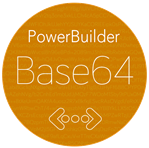Appeon has now fully resurrected the CodeXchange side of PowerBuilder-related resources for the developer community under the new Appeon Community website. Previously, the CodeXchange code samples were loosely housed underneath the main Appeon Website and “read-only”, which was not conducive for expanding the code examples, exchanging ideas about a particular code sample, or easily find code samples of interest. These limitations have now been addressed by housing the CodeXchange under the new Appeon Community website, as follows:
The new CodeXchange home allows for a much better code sample navigation and searching experience. It is better structured around the programming language and deployment targets you are interested in. It is easy to see if there are any new items and when the most recent activity occurred. You also have an advanced search functionality by clicking the “Search Code” button, as follows:
Figure 1- Advanced Search
When viewing a particular code sample, the new CodeXchange area now allows you to interact with the author and fellow developers. You can exchange ideas about or discuss the code sample by posting a reply. For example, you may want to ask the author a question or you may have suggestions for other Appeon Community users how to benefit from this code sample. And you can easily share the code sample with anybody by using the various sharing options, such as: email, Twitter, Facebook, Google, etc. interactions, as follows:






